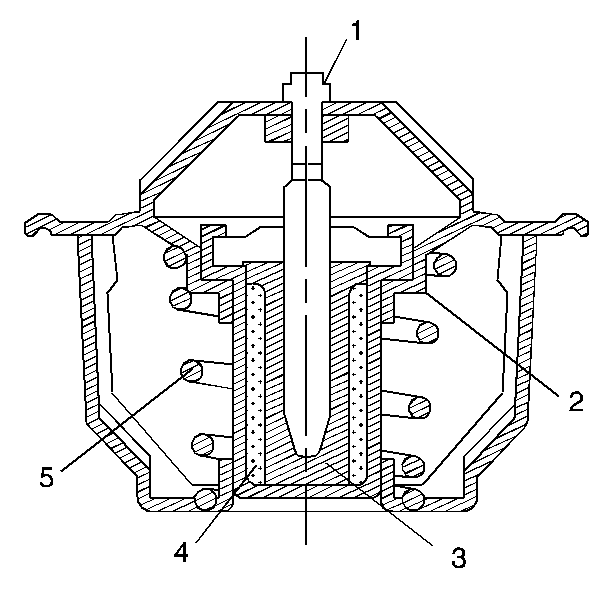The thermostat is a coolant flow control components that utilizes a temperature sensitive wax-pellet element (4). Its purpose is to close off the coolant passage when the engine is cold. Now coolant circulation is restricted, causing the engine to reach normal operating temperature more quickly. Also , after warm-up, the thermostat keeps the engine running at a higher temperature than it would without a thermostat. The higher operating temperature improves engine efficiency and reduces exhaust emissions.
The thermostat performs the following functions:
| • | Controls the flow of coolant through the radiator |
| • | Enables controlled engine warm up |
| • | Assists in coolant temperature control |

The wax pellet element (40 in the thermostat expands with increasing temperatures, and contracts with decreasing temperatures. The element connects through a piston (1) to a thermostat valve (2). When the element is heated, pressure is exerted against a rubber diaphragm (3) which forces the thermostat valve to open. As the element is cooled, the contraction allows a spring (5) to close the thermostat valve. While the coolant is cold, the thermostat valve remains closed. This prevents circulation of coolant through the radiator. At this point, coolant is only allowed to circulate throughout the engine block and heater core in order to allow the engine to warm quickly. As the engine warms, the element expands and the thermostat valve opens. This permits coolant to flow through the radiator, where the heat dissipates to the atmosphere.
